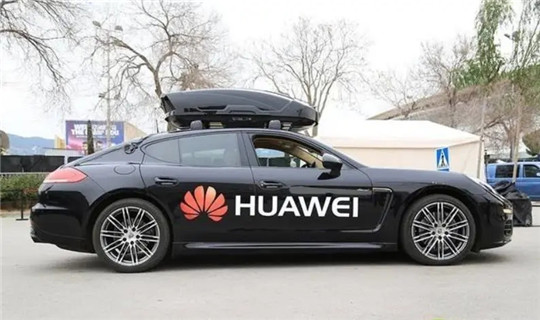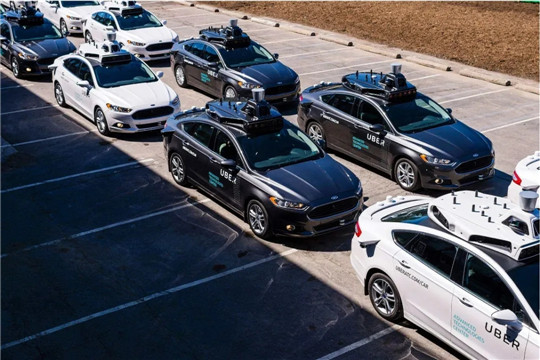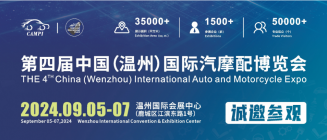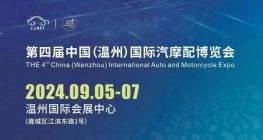Scan QRCode

According to Deloitte, China will have 30 million autonomous vehicles in operation by 2030, ranking first in the world.
It's been a decade since Google was revealed to be working on autonomous driving in 2009. In the fierce competition of automobile market, in addition to the competition of traditional appearance level, space, engine and other factors, the upgrade of driving assistance technology is also becoming a new competitive factor. Starting from 2018, the number of L2 level autonomous vehicles will gradually increase. In the first half of 2020, nearly 50 Models of L2 level and above will be launched.
From the technical perspective, autonomous driving research and development is a complex systematic project, and its realization process requires the comprehensive use of a number of technologies, including 5G, artificial intelligence, cloud computing and other cutting-edge technologies. Even blockchain is being used by some enterprises to develop autonomous driving.

From the perspective of the market, the commercialization of autonomous driving has always been the focus, and this year's sudden outbreak of the epidemic, in the short term, the production and sales of the auto industry, but also let the industry see the self-driving economy booming development space.
Didi completed its self-driving debut in Shanghai on June 27. And nine days after opening its self-driving service to the public, didi Chuxing again broke the news that it plans to hire up to 200 employees this year to strengthen its autonomous driving division and accelerate the expansion of its self-driving taxi service in Shanghai and other regions.
Later, at the third World Artificial Intelligence Conference in Shanghai on July 9, Tesla CEO Musk revealed that tesla is building an autonomous driving engineering team in China and will complete the research and development of basic autonomous driving functions of the L5 level this year.
This was followed by huawei Technologies Co LTD's announcement on July 10 of a patent filed in December 2018 on the autonomous driving system. The patent relates to an autonomous driving scheme and system that determines autonomous driving strategies based on historical and real-time environmental data of driving behavior to achieve safe driving.

There is no doubt about the potential of the autonomous driving market. According to incomplete statistics, at least 35 billion yuan has flowed into 20 autonomous driving companies from February to June this year, of which nearly 80% are established companies with solid technology accumulation or bright prospects. According to Deloitte, China will have 30 million autonomous vehicles in operation by 2030, ranking first in the world.
Toyota Motor Research and Development Center (China) Co., Ltd. has been granted the qualification to put four vehicles into operation, according to Beijing's 2020 road test qualification list for autonomous vehicles. There are also six companies on the list, including baidu, ma zhixing, Daimler, audi and Meituan review subsidiary sankuai.com.
At present, the century-old automobile industry is undergoing a transformation. The penetration rate of new energy vehicles has been increasing year by year. The large-scale popularization of 5G has brought about the integration and intelligentization of automobile network, the rapid development of the Shared travel market, and the "new four modernization" of Chinese automobiles has entered the fast lane. From main engine factories to parts suppliers, there is a rapid layout in the field of autonomous driving, but this does not mean that China ranks first in the maturity of autonomous vehicles in the world.
Accounting firm KPMG recently released the 2020 Autonomous Vehicles Readiness Index (AVRI), which aims to assess countries' Readiness for deployment of Autonomous Vehicles.

In the latest rankings, Singapore topped the list. The reason is that since the beginning of 2019, Singapore has taken many important steps to encourage the testing, development and adoption of self-driving cars, such as opening one-tenth of the road to autonomous vehicle testing.
China ranked 20th, with the report noting that while the Chinese government will make it easier to test self-driving cars on public roads in 2019, in more cities and with less control, such test vehicles will still need to have safe drivers.
Since then, a national strategy for building digital transportation infrastructure has been released, which involves autonomous vehicles, changing the way they use energy and improving their environmental performance. Starting in May 2019, China has also issued new standards for self-driving cars, including the international General self-driving rating regulations -- L0 to L5 -- issued in March 2020.
However, China still faces some challenges, including the gap between demand and supply for high-precision digital maps, and the need for further development of policies and standards for autonomous vehicles. In the report, China scored the lowest in data sharing, which could hinder the development of high-precision maps. In addition, The large number of pedestrians, cyclists and vehicles on China's roads will also have an impact on the development of autonomous driving.

But when it comes to industrial partnerships, China is no. 1. Moreover, the commercialization of autonomous vehicles in China is mainly reflected in special-purpose trucks used in warehouses, mines and goods distribution. In addition, Chinese retailers such as JD.com and Alibaba have started using autonomous vehicles on urban highways.
For traditional vehicle enterprises, it is difficult to transform themselves into a car technology company with software development capability as the core. Traditional automakers seem to have a better chance of doing well in areas below the L3 level, such as ADAS, than higher-level autonomous vehicles.
However, it is difficult for high-tech companies except traditional vehicle enterprises to independently support all technologies of intelligent vehicles and even autonomous driving design. Only through cooperation can we fill the gaps in our respective areas. As things stand, automakers are making relatively fast progress in achieving high levels of autonomous driving by working with companies that complement each other.

At present, since the L3 level regulations have not been implemented yet, it is difficult for high-level autonomous driving technology to break through the technical shackles, and the automatic driving technology upgrading of limited scenarios will be the current mainstream of competition, such as traffic congestion and expressway scenarios. On the contrary, the big data, operation network and road safety data of ride-hailing companies like Didi provide a strong reliance for them to select service areas suitable for autonomous driving.
From the very first mention of autonomous driving, most people will immediately think of the replacement of human, black technology... But if it is put into large-scale commercial operation, I am afraid it will take a little time.
AMS2024 Exhibition Guide | Comprehensive Exhibition Guide, Don't Miss the Exciting Events Online and Offline
Notice on Holding the Rui'an Promotion Conference for the 2025 China (Rui'an) International Automobile and Motorcycle Parts Exhibition
On September 5th, we invite you to join us at the Wenzhou Auto Parts Exhibition on a journey to trace the origin of the Auto Parts City, as per the invitation from the purchaser!
Hot Booking | AAPEX 2024- Professional Exhibition Channel for Entering the North American Auto Parts Market
The wind is just right, Qianchuan Hui! Looking forward to working with you at the 2024 Wenzhou Auto Parts Exhibition and composing a new chapter!
Live up to Shaohua | Wenzhou Auto Parts Exhibition, these wonderful moments are worth remembering!
Free support line!
Email Support!
Working Days/Hours!





